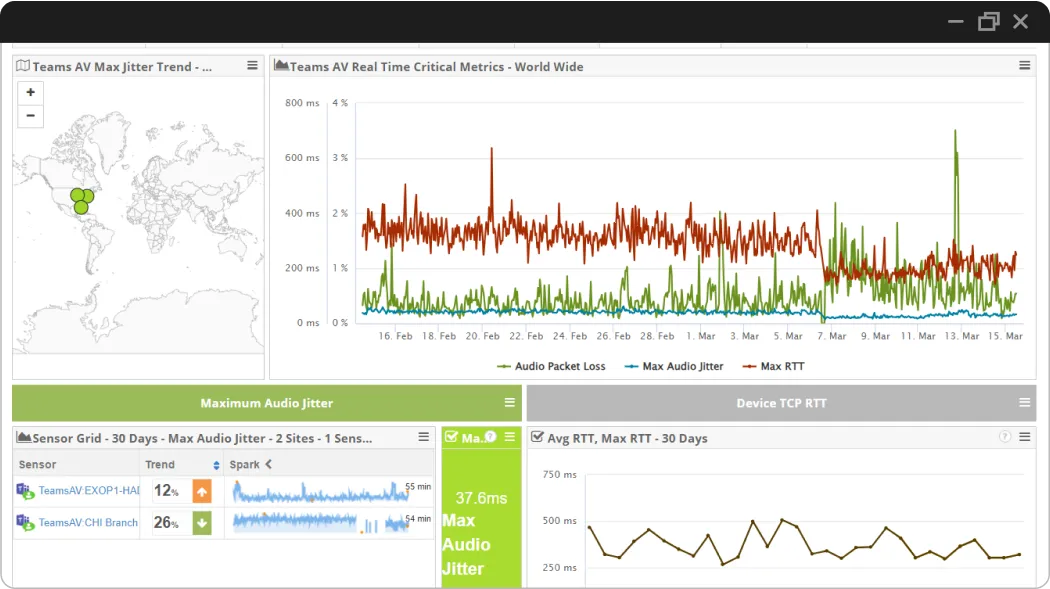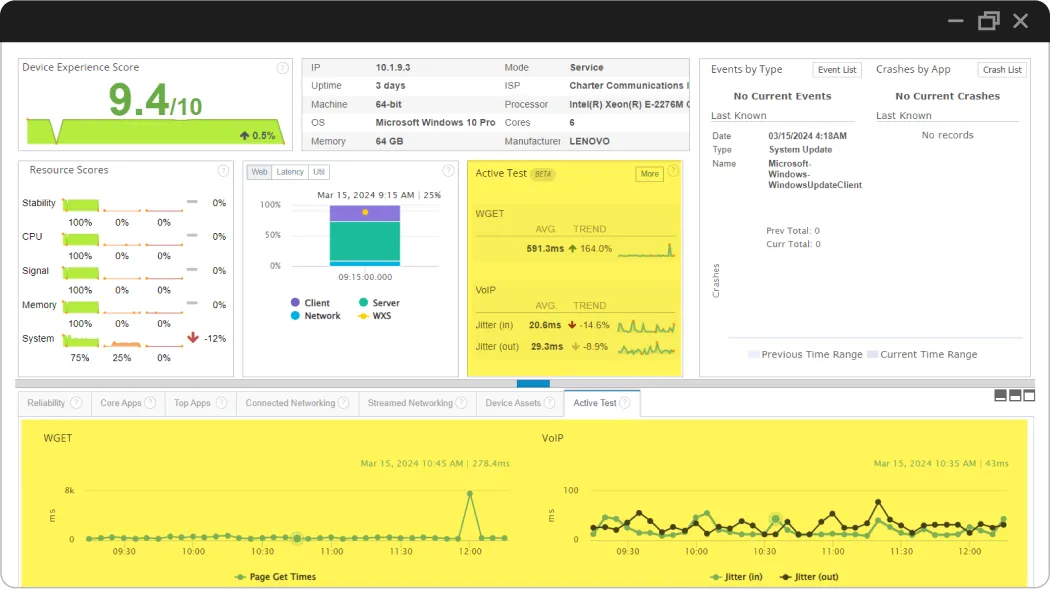Network Assessment for Microsoft Teams, Zoom, VoIP, and UC Apps
Plan, Deliver, & Operate UC Apps with Confidence
Microsoft provides practical guides and overviews to ensure successful usage of Unified Communications applications from Microsoft Windows. These guides include steps administrators can take to prepare their environments for UC and VoIP deployment alongside tools to ensure minimum requirements are met for an optimal user experience, productivity, and successful collaboration.
But there is a better way.
Manage Risk, Assess Network Readiness, & Remediate Poor Network Conditions
Organizations adopt new Unified Communications (UC) applications to save money or to improve collaboration and communications. However, these goals aren’t achieved without proper planning and network assessment.
Microsoft offers some tools for validating network performance before deployment. The Network Planner tool, designed for Microsoft Teams, provides administrators with the network requirements to optimize network connections and QoS. The Teams Network Assessment Tool will test network connectivity and performance.
Both are pre-deployment tools but the results are based on a point-in-time configuration of a network and don’t account for changes made afterward. The tools can also be difficult to get started with and won’t scale for enterprise modeling.

Network Assessment Solutions with Exoprise
Why Exoprise CloudReady Synthetics Are Better
A major difference between vendor-supplied network assessment tools and CloudReady synthetics is that Exoprise sensors run continuously and proactively notify application owners and network administrators of performance degradation.
Benefits of CloudReady Synthetics for UC Assessment
- Deploys instantly and easily
- Runs continuously for 24×7 detection
- Proactive notifications for packet loss, jitter, and increased latency
- Automated tickets through systems like ServiceNow
- Crowdsourced comparison data for easy benchmarking
- End-to-end system, router, and gateway tests
Implement Quality of Service (QoS) for UC Apps
QoS is a way to prioritize network traffic and provide a superior digital experience for end-users using UC tools like Teams, Zoom, or WebEx. If network admins don’t assign a higher priority to UC packets, then they will be treated like any other traffic on the network.


Real User Monitoring for VoIP, UCaaS, and UC Apps
Service Watch collects the performance metrics of Unified Communications tools in real-time. For any UC app like Microsoft Teams, Zoom or Google Meet, jitter, round-trip times and packet loss are collected for insight into the end-to-end network performance.
Use Exoprise Service Watch for a holistic view into the end-to-end application and network performance.
Enterprise Use Cases - Synthetic VoIP, UCaaS, and Network Testing

Enterprise Use Cases - Service Watch Real User Monitoring

Real-time QoS Notifications from Any UC App
Exoprise Service Watch captures statistics from all the VoIP, remote meeting, and collaboration tools to assist with diagnosis and root-cause analysis when something goes wrong.
Improve support, detect problems for every business user no matter where they work from.
Service Watch Active Test
Service Watch Active Test is ideal for proactive testing and monitoring from branch office or remote employees who may be having issues that are difficult to troubleshoot. Active Test can be configured to deploy quickly to any user endpoint for quick diagnosis anywhere.
Lightweight synthetics from every vantage point ensures reliable delivery.
Start testing your network in 5 minutes